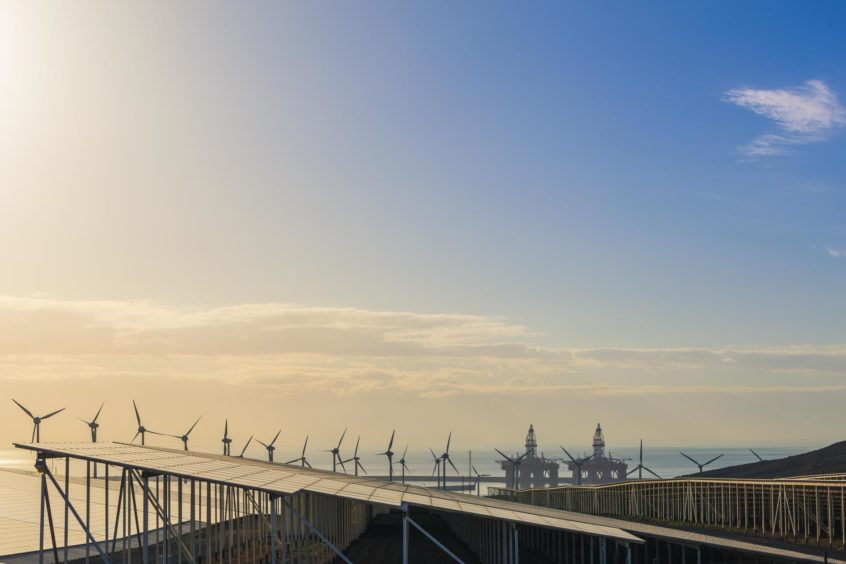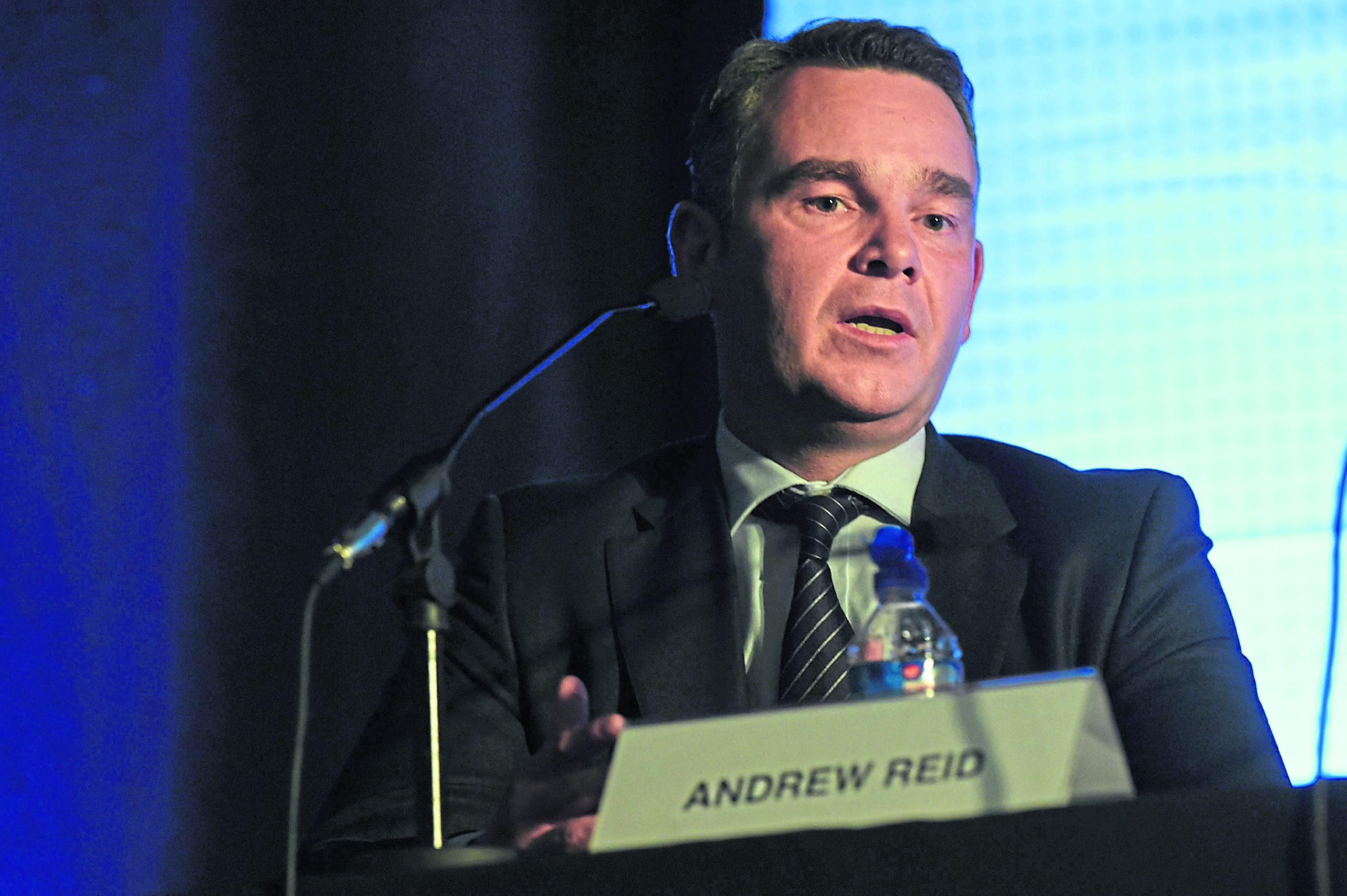
With crucial COP26 climate talks in Glasgow on the horizon, the coming 10 months promise to be hugely important for establishing renewable energy targets for the UK oil and gas sector, top industry analysts and finance experts believe.
Andrew Reid, partner at market research and consultancy firm NorthStone Advisers, said “all the catalysts are there” for the sector, and the UK as a whole, to build momentum and develop world-class green energy capability in growing areas such as hydrogen, carbon capture and other important renewable sources.
UK Government support for these projects and technologies appears to be forthcoming and there is backing aplenty from the financial community, Reid said.
As such, creating a “strategic plan” and putting infrastructure in place to “drive sustainable growth” will be high on the agenda this year, he said.
Reid added the challenge beyond 2021 would be maintaining this focus and not reverting all resources back to upstream activity.
He believes upstream will likely “boom” in the coming years to make up for recent underinvestment, which stands to leave the world with supply levels down by a “catastrophic” 10% on pre-pandemic levels.
Derek Leith, global oil and gas tax leader at EY, hopes COP26 will be an “enabler” to help the oil and gas sector gain the government support it needs to make the transition into new green energy.
Mr Leith said there were “quite a few dimensions” to the North Sea Transition Deal (NSTD) currently being considered by Westminster, one of which is about developing a “proper narrative”.
He said the UK’s energy mix meant oil and gas would remain vital over the coming decades and that the prize for transitioning successfully would be “huge” for industry and Aberdeen.
However, a gap exists between “where the industry wants to be from renewables perspective” and where it is currently.
Leith said oilfield service (OFS) companies’ desire to diversify into renewables and green energy was being stymied by a lack of live projects.
The launch of ScotWind, with more than £8 billion of investment potential, bodes well for the future, but projects stemming from the leasing round won’t start for several more years.
Its hoped the NSTD will “bridge the gap”, allowing the oil and gas industry to retain skilled workers who will go on to support renewable energy projects once activity levels have increase in that field.
Jessica Brewer, principal upstream analyst at energy research and consultancy firm Wood Mackenzie, said the energy transition was a “massive topic” for the industry and that COP26 would keep it firmly on the agenda, as will the UK’s legally-binding net-zero 2050 target.
Brewer said there had been a lot of “general talk” and studies about “integrated energy basins” on the UK continental shelf.
One of the pillars appears to be platform electrification, an area in which Norway is more advanced.
Brewer said the UK would have to “remove regulatory barriers” so that progress can be made on that front.
She doesn’t foresee any big moves in that area until 2022-23, when final investment decisions are expected on major projects west of Shetland.
Brewer believes these developments are the most viable candidates for electrification, because the infrastructure can be integrated from the start, rather than having to be retrofitted.
Despite higher prices, don’t expect project FID bonanza any time soon
The oil industry is spending lots of time ruminating on the transition, partly because it has to — the fear of losing its societal licence to operate is genuine.
Oil and gas firms are also less busy in their more traditional areas of exploration, development and wheeling and dealing, though the logistics of coping with Covid must be hugely time consuming.
Brewer said Woodmac expected companies to drill 10 exploration wells in the UK and 30 in Norway this year, roughly flat on 2020 levels.
Most targets will be close to existing infrastructure, rather than in frontier acreage.
Edinburgh-headquartered Woodmac forecasts nine FIDs in the UK, including Ithaca’s Captain EOR phase two and Tolmount East, operated by Premier Oil – soon to be Harbour Energy.
This would represent an improvement on 2020, which was a real tumbleweed affair, and is good news for the supply chain.
However, most of the projects will be smaller, short-cycle, high-return tie-backs, so it won’t be a “bonanza”, by any stretch.
Brewer said the UK North Sea won’t enjoy much uptick in capex until after FIDs have been made on bigger projects west of Shetland, such as Cambo (Siccar Point), Rosebank (Equinor) and Clair South (BP).
Reid and Leith said current oil and gas prices would ordinarily be strong enough to support investment decisions, certainly for smaller projects.
But, when it comes to loosening companies’ purse strings, the prospect of price “stability” is a more important factor.
Reid said: “What will be key to increasing spending is confidence that prices will remain in the $50s or higher longer-term.
“This remains uncertain given the current price spike has been prompted by an unexpected oil supply reduction by Saudi Arabia, which could be reversed at any time.
“There is also continued uncertainty regarding when we will have global control of the pandemic and how long it will drag on economic activity.
“I don’t think there is a magic number right now that will create a spending boost.”
To keep a lid on the pandemic, operators have reduced manning levels to prevent the virus spreading. They are also focusing on activities that safeguard existing production, at the expense of projects to deliver new reserves.
This won’t change until Covid is brought under control, Reid said.
Reid added: “E&P companies are not under any pressure to invest in finding new reserves through exploration or increasing production through new field development approvals, thus I expect they will sit tight while improving their balance sheets for much of 2021.”
Leith said EY’s outlook on oil and gas prices was “positive” despite the virus’ resurgence preventing a demand bounceback from sectors such as aviation, which could take a long time to recover.
He said prices could stay where they are provided that Opec and its allies maintain their supply-side “discipline” and inventories continue to be drawn down.
In addition, the “gloss” has well and truly come off the US onshore shale industry, which Leith feels is no longer the “swing producer” it once was.
Leith said: “Generally, on price, a lot of oil companies are quoting a range of $45-60 per barrel this year and even lenders, who are usually more conservative, are not miles away from that.
“If we can stay in this price range a few months longer we will see the sanctioning of developments, but these will be smaller tie-backs rather than major projects.”
M&A: Majors to continue rationalisation, OFS stubborn
Turning to merger and acquisitions, all three experts believe major exploration and production companies who are transforming into “broader” energy firms will continue to “rationalise” their portfolios in 2021.
Their ageing, carbon-intensive assets may interest independent upstream companies.
Sales which stalled or collapsed in 2020, such as BP’s efforts to divest its stakes in the Andrew and Shearwater assets to Premier Oil, are likely to come back into focus.
There is no shortage of available packages, but finding buyers who can gather up the necessary funds is likely to be challenging.
Reid said getting E&P deals over the line would be difficult and that he anticipated seeing more mergers and non-cash deals.
Leith said consolidation had been “stubbornly avoided” in the OFS sector in recent years.
He found it “incredible” that EY’s OFS report from 2019 showed the sector had more companies than in 2011, despite being struck by a severe downturn, which began in 2014 and never ended for many.
But this difficult scenario companies have found themselves in goes a long way to explaining the subdued M&A levels.
Sellers’ valuations of their businesses will be rose-tinted by the amount of sweat and graft they have put into them, as well as their hopes for an upturn in the coming years.
Buyers, naturally, will find it difficult to see past the cost pressures imposed by clients over the last six years and the recent slashing of operators’ capex programmes.
And so the valuation gap has remained obdurate.
Leith said: “Unless there are some forced sales because people have got to the end of the line with their bank facilities, then it’s not obvious anyone is going to go around snapping up companies.”
Leith also said the jury was still out on whether more oil and gas companies would go under in Aberdeen this year.
He said firms in this sector were used to “boom and bust” and were, therefore, more resilient and better able to cope.
However, if the Covid vaccine rollout and the move towards the warmer, spring and summer months puts a lid on the pandemic, government support will have to start coming to an end.
It means the second half of the year could be “tough”, exposing businesses that have not managed to shore up their balance sheets.
As for the threat of further redundancies, Leith’s perception is that not many of the big players in the E&P or OFS segments would be “carrying people” just because of furlough and will already have taken steps to right-size.

 © PRESS AND JOURNAL
© PRESS AND JOURNAL © Supplied by Wood Mackenzie
© Supplied by Wood Mackenzie
